
Sony InZone M10S
MSRP $1,100.00
“I wish I could recommend the InZone M10S, but it really needs a better warranty.”
Pros
- Searing brightness
- Thoughtfully designed stand
- Unmatched motion clarity
- InZone Hub for managing your monitor
- Great color coverage
Cons
- Only a one-year warranty
- Expensive
- Color accuracy isn’t great out of the box
Sony’s InZone brand is back. InZone burst onto the scene two years ago, with the InZone M9 quickly shooting to the top of the best gaming monitors list. After losing some ground to other mini-LED and OLED options, Sony is back with its first OLED gaming monitor ever: the InZone M10S. And it’s quite the sight to behold.
With a 480Hz refresh rate, a thoughtful design, and the highest brightness I’ve ever recorded for an OLED display, it’s easy to say the M10S is an impressive monitor. Despite that, I’m struggling to recommend it. Sony is coming in more expensive than the competition, all while delivering less warranty coverage, which makes the M10S a tough sell regardless of how impressive it is.
Sony InZone M10S specs
| Screen size | 26.5 inches |
| Panel type | OLED (LG Display WOLED) |
| Resolution | 2,560 x 1,440 |
| Peak brightness | 1,300 nits (HDR), 275 nits (SDR) |
| HDR | DisplayHDR True Black 400 |
| Local dimming | 3,686,400 dimming zones |
| Contrast ratio | 1,500,000:1 |
| Response time | 0.03ms (GtG) |
| Refresh rate | 480Hz |
| Curve | N/A |
| Speakers | N/A |
| Inputs | 2x HDMI 2.1, 1x DisplayPort 2.1 |
| Ports | 2x USB-A |
| List price | $1,100 |
Back-to-basics design
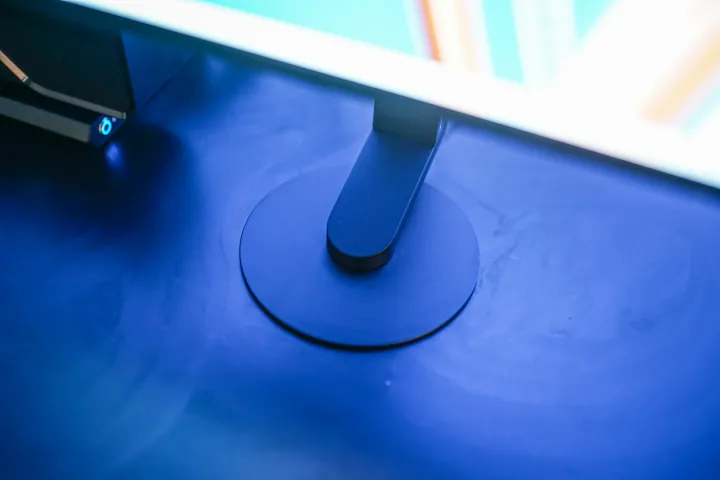
It only took one generation for Sony to give up on the unique — and heavily criticized– design of the InZone M9. The M10S is definitely less bombastic in its design, and you could mistake it for any other monitor at first glance. The more you look at the display, however, the more clear it becomes how much is different compared to a monitor like the Cooler Master Tempest GP27Q.
The stand is extremely small. Sony says it was designed alongside esports team Fnatic, and although I don’t normally put much stock in “esports designed” peripherals, the competitive influence shows through here. The base of the stand is small, but Sony also offsets the arm of the stand. The combination of these two changes allows you to get very close to the display with your keyboard and mouse, as well as position them in a way that’s comfortable.
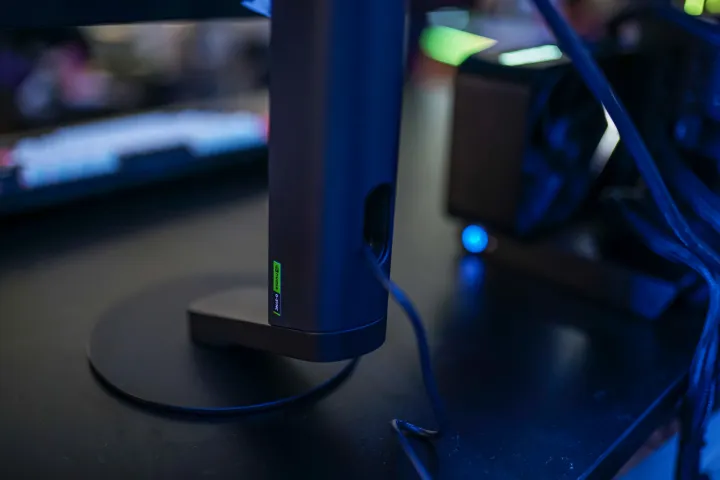
For design changes that are more practical to everyone, Sony now includes a cable routing channel through the stand so you can keep your cable clutter to a minimum. It works well for the power adapter, though I wasn’t able to fit a DisplayPort cable with a ferrite bead — the little plastic bump on the end of some cables — through the routing channel. I understand keeping the stand small for competitive gamers, but a small bump in size would ensure you could fit these types of cables through the routing channel.
One of the biggest upgrades compared to the old InZone M9 comes in the adjustments. You can actually position the monitor properly on the stand now with 180 degrees of swivel in either direction, 30 degrees of tilt, and 4.7 inches of height adjustment — that’s more than most monitors offer. Like the previous design, you can also just ditch the stand and use the the 100mm x 100mm VESA mount to attach the M10S to a monitor arm.
Competitive features
The M10S is focused on competitive gaming, and it has a feature set to match. While monitors like the Asus ROG Swift PG32UCDM focus more on console experiences with features like Black Frame Insertion (BFI), Sony’s list of features caters to esports players on PC. I’m not much of a competitive player, and I normally write off features specifically catered to esports players, but Sony’s offerings here are actually useful.
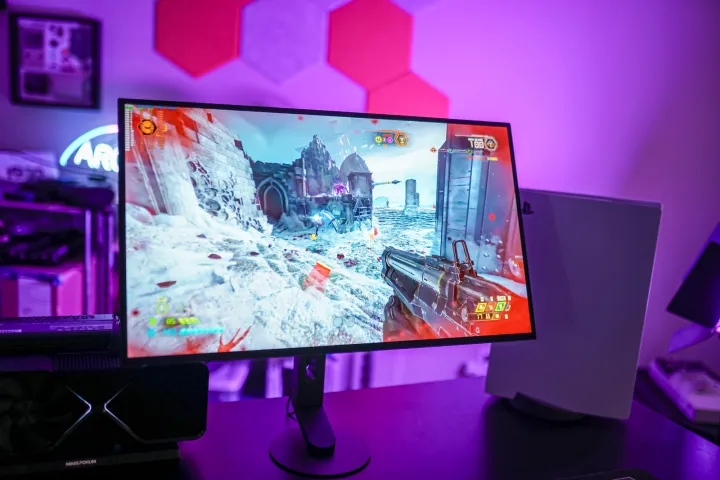
Most notably, the M10S comes with a 24.5-inch mode. This crops in the display a bit, but Sony still uses the native resolution of the monitor — you get 1332p instead of 1440p. This is the size of display you’ll find in a tournament setting, so it makes sense for competitive players to crop in and get the same feeling that they’ll get when properly competing. Moreover, Sony allows you to choose between center or bottom alignment.
Sony also includes two picture profiles tuned for competitive games — FPS Pro and FPS Pro+. The latter boosts the saturation of the monitor to provide better highlights around the edges of characters. It works shockingly well, though I don’t know how much of an edge it will actually give you in games. The oversaturated look really doesn’t work well outside of games, either.
Just like the InZone M9, you get some PS5-exclusive features.
FPS Pro is more interesting. Sony says this picture profile attempts to emulate what you’d see on a traditional LCD display by actually lowering the contrast of the OLED panel. It doesn’t look great, no, but if your goal is to train on a display that will accurately translate into a competition, I can see how FPS Pro would be useful.
Just like the InZone M9, you get some PS5-exclusive features, too. With the PlayStation 5 attached — Sony wouldn’t confirm support for the PS5 Pro — the monitor will automatically change your picture profile depending on what you’re doing, from playing different genres of games to watching a movie. Strangely, the M10S doesn’t support auto HDR tone mapping with the PS5, which is a feature available on the original InZone M9, as well as the new M9 II.
We have DisplayPort 2.1
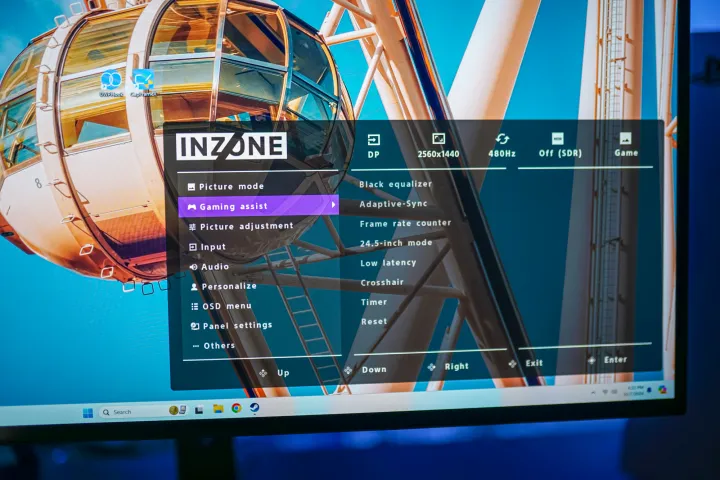
Sony has a very nice on-screen display (OSD), and I had absolutely no issues navigating it with the four-way joystick on the back of the monitor. The OSD is large and clear, and you don’t have to worry about shutting off your monitor accidentally as Sony separates the power button from the joystick. You don’t need to use the OSD, though.
With the InZone Hub, you can control everything your monitor does with your keyboard and mouse — provided you use the USB-B connection to hook the monitor up to your PC. The InZone Hub is great, and although more monitor brands like Asus have developed apps that allow you to control your monitor with a desktop app, Sony was among the first.
Sony also has an edge with port selection. You get an integrated USB hub with two USB-A ports, along with a third USB-A port reserved for firmware updates. For inputs, you get two HDMI 2.1 ports along with a DisplayPort 2.1 connection. This is one of the first monitors around with a DisplayPort 2.1 connection, and although you can achieve the full resolution and refresh rate with DisplayPort 1.4, I’m happy to see Sony push ahead with the new standard.
Although DisplayPort 2.1 is a highlight, the lack of USB-C is a lowlight. There’s no USB-C input, and by extension, no power delivery or KVM switch. Sony is charging a premium for the M10S at $1,100 and is more than the competition from Asus, and a USB-C input along with KVM switch would go a long way in justifying that premium. As it standard now, you’re mainly paying up for DisplayPort 2.1 certification, which isn’t important unless you’re strictly against using the lossless Display Stream Compression (DSC).
Insanely bright
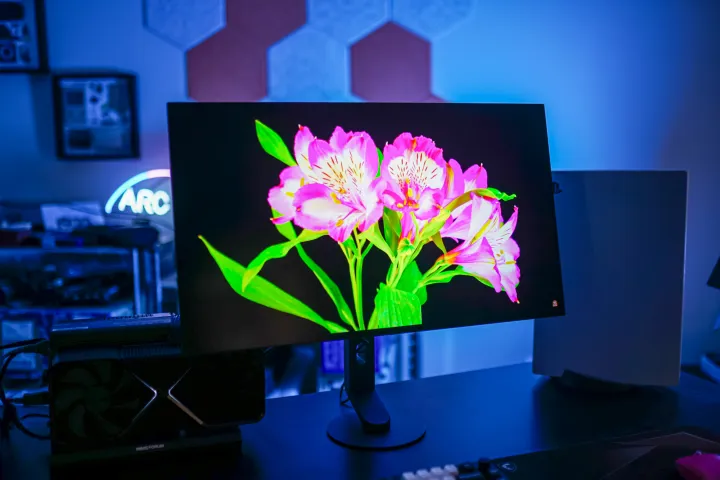
Most monitor brands play fast and loose with their monitor measurements, but not Sony. The M10S delivered in the exact way Sony said it would, which is shocking. This display has some of the best color and brightness I’ve ever seen out of an OLED monitor, even compared to the Asus ROG PG27AQDP, which uses the same panel as the M10S.
Unsurprisingly, most of my results align with that display, but Sony managed to push things just a hair further. For gamut, you’re getting 100% of sRGB in the Standard picture profile, along with 98% of DCI-P3 and 89% of AdobeRGB, both of which are 1% ahead of Asus’ display. That’s not going to make much of a difference in practice, but it’s nice to see Sony deliver on its promise of covering 98% of DCI-P3.
| Color coverage | |
| sRGB (Standard mode) | 100% |
| DCI-P3 (Standard mode) | 98% |
| AdobeRGB (Standard mode) | 89% |
| sRGB (HDR mode) | 96% |
| DCI-P3 (HDR mode) | 71% |
| AdobeRGB (HDR mode) | 71% |
If you’re doing color work, Sony allows you to clamp the gamut to sRGB through a picture profile. Unfortunately, the color accuracy isn’t great out of the box, even when clamped to sRGB. I measured a color error of 1.87, which is slightly worse than what I saw with the Asus display and a far cry from the QD-OLED monitors I’ve reviewed like the Alienware 27 QD-OLED. That monitor managed a color error of just 0.46 out of the box.
| Average Delta-E (color difference) | |
| Standard (sRGB) pre-calibration | 1.87 |
| Standard (sRGB) post calibration | 1.18 |
Running the display through calibration with the Spyder X2 improved the accuracy quite a bit, bringing the color error down to 1.18. That’s acceptable for color work, but the M10S isn’t ideal if you frequent creator apps. This monitor uses a WOLED panel from LG Display, and out of the monitors I’ve reviewed this year, it’s clear a QD-OLED panel from Samsung Display is the better choice if color accuracy is what you’re after. Still, the M10S isn’t bad, especially if you calibrate it.
The M10S shoots ahead of the competition when it comes to brightness. Every new OLED monitor I review, there’s a new bar for peak brightness, but Sony really set a high bar with this display. In HDR, I measured over 1,200 nits of peak brightness, which is the closest I’ve seen a display get to the 1,300 nits that this panel is (apparently) capable of.
| Peak brightness | |
| 1% SDR | 277 nits |
| 4% SDR | 276 nits |
| 10% SDR | 276 nits |
| 1% HDR | 1,206 nits |
| 4% HDR | 860 nits |
| 10% HDR | 753 nits |
Sony trades higher peak brightness for lower brightness overall, though. It drops by a fairly high degree when jumping up to a higher window size. Brightness always drops, but the M10S wasn’t able to maintain above 1,000 nits, even at a 4% window.
HDR has a bit of a quirk, too. Sony includes four picture profiles for HDR — DisplayHDR, Cinema, Game, and RPG — but the Game mode is what delivers the brightness you see above. All of the other modes are much dimmer, and the colors are way off in the RPG mode.
Although the M10S is insanely bright when HDR is on, the SDR brightness is lacking. It delivers the 275 nits that Sony promises, but it’s still fairly dim. That’s not a knock against Sony specifically, as even QD-OLED monitors like the MSI MPG321URX struggle when it comes to SDR brightness.
Justifying 480Hz
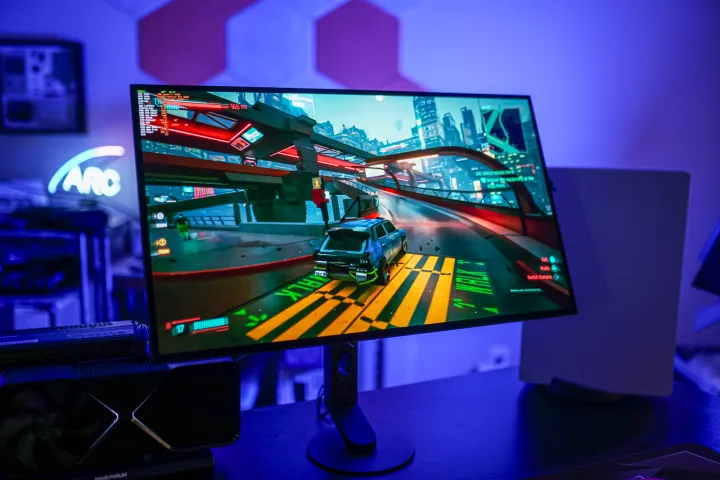
It’s clear that the InZone M10S is tuned for gaming. Although the color accuracy isn’t great out of the box, the monitor looks fantastic out of the box when you’re playing games. That’s especially true in cinematic titles like Black Myth: Wukong or Final Fantasy XVI, where the insane brightness of the M10S and exceptional contrast of OLED come together to create an image that’s almost impossible to replicate. You could say that for most OLED monitors, though.
The main draw for gaming is the 480Hz refresh rate, which, combined with the insanely low pixel response times of OLED, leads to the best motion clarity on a monitor that money can currently buy. That’s why Sony is catering this monitor toward esports players. You can get a high refresh rate on a monitor like the Alienware AW2524H, but it’s the low pixel response times of OLED that really lets this high of a refresh rate shine.
Although I see the use case for competitive players, you really need to be a competitive player to justify the price of the InZone M10S. You can pick up a last-gen monitor like the LG UltraGear OLED 27 for about $600, which is close to half the price of the InZone M10S. The brightness isn’t as good, but you still get the incredible contrast of OLED and a speedy 240Hz refresh rate. If you don’t play many competitive games — and even if you play demanding competitive games like Fortnite or The Finals — you’ll rarely even saturate a 240Hz refresh rate.
OLED monitors are moving quickly, and that works against displays like the M10S. It’s reasonably priced at $1,100 considering the options available just a year ago, but it’s hard to justify the latest and greatest displays when the last-gen options are marked down so rapidly. I have no doubt the M10S will be available for less money down the line, and in that case, it’s worth spending up for the higher refresh rate. Now when the monitor is selling at list price, however, you really need to weigh how important a 480Hz refresh rate is in the games you play.
The warranty needs to be better
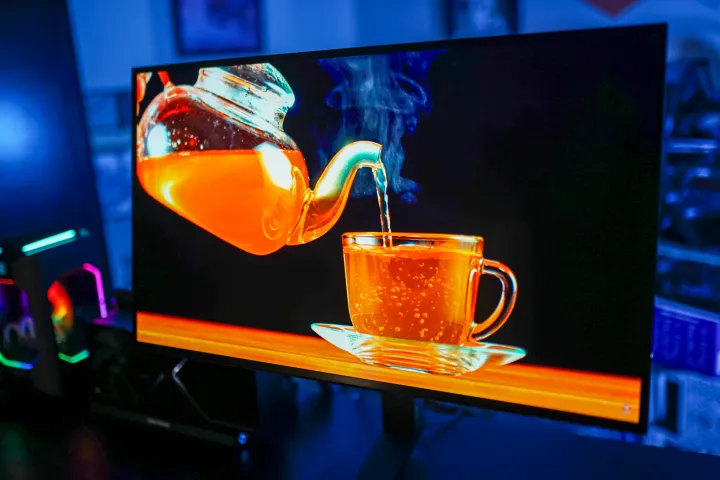
Sony is offering a warranty on the InZone M10S that covers burn-in, which is great. Most brands didn’t cover burn-in with their first OLED options, but the monitor industry has moved on, and so has Sony. I’m worried it’s not going far enough, though. Alienware set the bar for OLED warranties with the Alienware 34 QD-OLED, offering burn-in protection for three years. Sony covers burn-in, but only for one year. That’s worse than even the LG UltraGear Dual Mode OLED, which offers two years of coverage.
You shouldn’t develop burn-in in three years if you properly maintain an OLED monitor, much less in a single year. However, the three-year warranty available from most other brands is a vote of confidence. It covers the edge cases where a monitor degrades more rapidly than expected, as well as situations where there’s a larger issue with the display that doesn’t show up right away.
It’d be one thing if most OLED monitors were only covered for a year, but they’re not. After all, why should I spend more money on the M10S when I can get the ROG PG27AQDP for less money, and with a three-year warranty? This is Sony’s first OLED monitor, and under a brand that’s only been around for a little over two years. With OLED tech that’s bound to degrade at some point, the warranty coverage here doesn’t inspire a lot of confidence.
Thankfully, Sony still includes options to mitigate burn-in on the M10S. There’s an automatic screensaver, as well as pixel shifting, pixel and panel refresh, and static image detection, which will lower the brightness on static elements. That’s a solid assortment of burn-in prevention features specifically targeting problematic areas like your taskbar.
Should you buy the Sony InZone M10S?
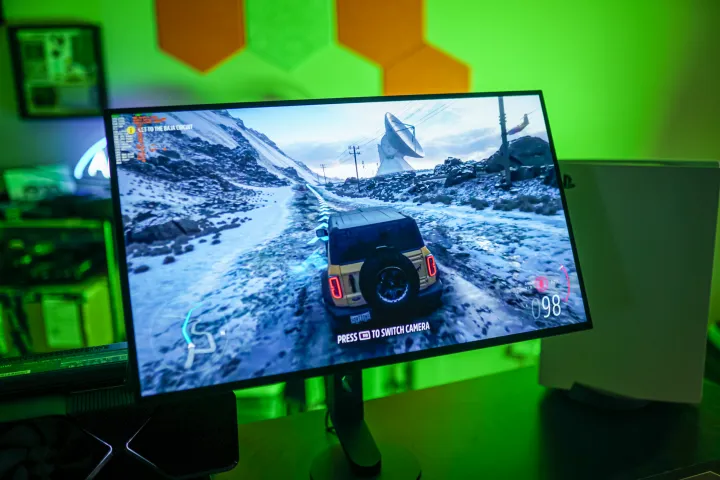
I want to recommend the InZone M10S. I really do. It’s a beautiful monitor with searing brightness, and it’s thoughtfully designed in a way that supports competitive players. It comes with some great features, too, as well as pushes the envelope forward for gaming monitors with a DisplayPort 2.1 connection. There are two things holding me back from a recommendation, though, and both come down to the price.
First and most obvious is that a 240Hz refresh rate is more than enough for most gamers, and you can give up some brightness with a last-gen panel while saving $500 or more. Of course, that math changes if you find the InZone M10S on sale. At around $900, it’s a decent pickup, and at $800, it’s a slam dunk. If you spend $1,000 or more on the monitor, just know that you’re paying to be one of the first to adopt a 480Hz OLED — with how quickly OLED monitors move, the M10S is bound to see a price drop eventually.
If you’re already sold on the 480Hz refresh rate, the main thing standing in the way of the M10S is the ROG PG27AQDP. It offers nearly identical performance and specs, and it’s $100 cheaper. More importantly, it comes with a three-year warranty. The InZone M10S may have DisplayPort 2.1, but I’d settle for DSC on the Asus monitor and a three-year warranty any day of the week.





